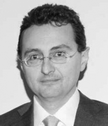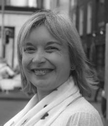The 21st European Microwave Week was held in Madrid, Spain, from September 23rd to 28th, 2018. This conference event, organized by the European Microwave Association (EuMA), hosted the 48th European Microwave Conference (EuMC) – that came back to Madrid after 25 years –, the 13th European Microwave Integrated Circuits Conference (EuMIC), and the 15th European Radar Conference (EuRAD). The three conferences were successfully accompanied by 33 workshops and eight short courses, covering the most relevant and inspiring topics in the microwave arena, and by the traditional industrial exhibition (the largest of its kind in Europe) which attracted about 300 exhibitors. More than 1700 individual delegates attended the week, excluding visitors to the exhibition.
This Special Issue of the International Journal of Microwave and Wireless Technology gathers most of the best technical outcomes from the European Microwave Week EuMW 2018. After performing an exhaustive and detailed review process of the total number of received contributions (over 900), the Technical Program Committee (composed by 110 members and more than 430 reviewers) selected the highest quality papers (with an acceptance rate below 58%) that were finally presented during the event. Then, just the top 10% rated conference contributions were invited to submit an extended version to the journal. These works went through an additional review and editorial process, and as a result 18 outstanding contributions are included in this special Issue you are about to read. For sure, the selected papers reflect the most relevant topics and recent challenges in the area of high-frequency technologies, devices, and systems.
A wide range of aspects (theory, simulation, design, measurement, and real-world applications) are tackled in the papers included in this Special Issue. For instance, radar systems for automotive and railway applications, as well as technologies for detecting flying drones, have been addressed. An advanced numerical technique for the more efficient analysis of components (waveguides and horns) with elliptical shape is described. Leading device technologies and high-power devices for microwave and millimeter-wave applications are also shown. Novel design techniques and solutions for passive components (e.g. quasi-reflectionless filters and rectenna arrays), tuning elements (as low-loss ferroelectric varactors), active devices (e.g. low-loss signal generators), and fully-digital transmitter chains (including modulators, switches and power amplifiers) are successfully covered in several articles. Alternative technologies for the practical implementation of chip interconnections at high frequencies are thoroughly compared in one of the papers. Two other articles present new promising applications of artificial transmission lines, in particular for the realization of compact power dividers including filtering capability, and DC-biasing circuits of high-efficiency power amplifiers.
As Associate Editors, we would like to thank all authors and their teams for accepting our invitation to submit their works, and prepare very valuable contributions. This Issue would not be possible without the involved reviewers, whom we recognize and sincerely thank for their efforts, wise advices, exhaustive criticisms, time dedication, and unbounded generosity. We also acknowledge our two Editors-in-Chief: Prof. Almudena Suárez, who started this Special Issue and gave us the opportunity to participate in this nice task, and Prof. Francisco Medina who has helped us so much to conclude this work successfully.
Finally, we wish you a fruitful reading of this special Issue on the 21st European Microwave Week, and we take the opportunity to invite you to share the future results of your research activities in the International Journal of Microwave and Wireless Technologies.
 Vicente E. Boria received the “Doctor Ingeniero de Telecomunicación” degree from the Universidad Politécnica de Valencia, Valencia, Spain, in 1997; where he is Full Professor (at “Departamento de Comunicaciones”) since 2003. In 1995 and 1996, he was holding a Spanish Trainee position with the European Space Research and Technology Centre, European Space Agency (ESTEC-ESA), Noordwijk, The Netherlands, where he was involved in the areas of electromagnetic analysis and design of passive waveguide devices. He has published 10 chapters in technical textbooks, 180 papers in refereed international technical journals, and over 200 papers in international conference proceedings. His current research interests are focused on the analysis and automated design of passive components (in particular filters and multiplexers) in several technologies, as well as on the simulation and measurement of power effects in high-frequency devices and systems.
Vicente E. Boria received the “Doctor Ingeniero de Telecomunicación” degree from the Universidad Politécnica de Valencia, Valencia, Spain, in 1997; where he is Full Professor (at “Departamento de Comunicaciones”) since 2003. In 1995 and 1996, he was holding a Spanish Trainee position with the European Space Research and Technology Centre, European Space Agency (ESTEC-ESA), Noordwijk, The Netherlands, where he was involved in the areas of electromagnetic analysis and design of passive waveguide devices. He has published 10 chapters in technical textbooks, 180 papers in refereed international technical journals, and over 200 papers in international conference proceedings. His current research interests are focused on the analysis and automated design of passive components (in particular filters and multiplexers) in several technologies, as well as on the simulation and measurement of power effects in high-frequency devices and systems.
Dr. Boria is member of the European Microwave Association (EuMA), and has been the Chair of the 48th European Microwave Conference held in Madrid, Spain. Since 2018 he is a Fellow of IEEE, where he has been member of MTT and AP societies since 1992. He acts as a regular reviewer of the most relevant technical journals on his areas of interest, and has been Associate Editor of IEEE Microwave and Wireless Components Letters (2013–2018) and IET Electronics Letters (2015–2018). Presently, he serves as Subject Editor (Microwaves) of IET Electronics Letters, and as Editorial Board member of International Journal of RF and Microwave Computer-Aided Engineering. He is member of the Technical Committees of the European Microwave Conference and of IEEE-MTT International Microwave Symposium.
 Teresa M. Martín-Guerrero was born in Málaga, Spain. She received the Grado de Licenciado en Ciencias Físicas (M.Sc. equivalent in Physics) from the Universidad de Granada, Granada, Spain, in 1990, and the Grado de Doctor Ingeniero de Telecomunicación (Ph.D. equivalent in Telecommunication Engineering) from the Universidad de Málaga, Málaga, in 1995. In 1991, she joined the Departamento de Ingenieria de Comunicaciones, Universidad de Málaga, where she became a Full Professor in 2016. From 2008 to 2012, she was the Vice-Director for Research with the E.T.S Ingeniería de Telecomunicación (Faculty of Telecommunication Engineering), Universidad de Málaga. She has been the chair of the 13th European Microwave Integrated Circuits Conference (EuMIC) held in Madrid in September 2018. Her current research interests include microwave and millimeter-wave device characterization and modeling and the analysis, and design of RF nonlinear circuits.
Teresa M. Martín-Guerrero was born in Málaga, Spain. She received the Grado de Licenciado en Ciencias Físicas (M.Sc. equivalent in Physics) from the Universidad de Granada, Granada, Spain, in 1990, and the Grado de Doctor Ingeniero de Telecomunicación (Ph.D. equivalent in Telecommunication Engineering) from the Universidad de Málaga, Málaga, in 1995. In 1991, she joined the Departamento de Ingenieria de Comunicaciones, Universidad de Málaga, where she became a Full Professor in 2016. From 2008 to 2012, she was the Vice-Director for Research with the E.T.S Ingeniería de Telecomunicación (Faculty of Telecommunication Engineering), Universidad de Málaga. She has been the chair of the 13th European Microwave Integrated Circuits Conference (EuMIC) held in Madrid in September 2018. Her current research interests include microwave and millimeter-wave device characterization and modeling and the analysis, and design of RF nonlinear circuits.
 Mateo Burgos received his Ph.D. degree in 1994 from Universidad Politécnica de Madrid, Madrid, Spain, where he is a full professor since 2010. He has worked in more than 100 R+D projects in the field of radar, mainly for security and defense, collaborating with many European and American companies and institutions. In year 2010 he was also co-founder of the company Advanced Radar Technologies, S.A. He holds several radar patents, and he is author of more than 100 scientific essays and publications, some of them awarded with prizes in several conferences. Since 2015 he is director of the UPM-ISDEFE Technological Observatory for Defense and Security. His current research interests include high-resolution radars, SAR, electronic warfare, drone detection, and radar system development.
Mateo Burgos received his Ph.D. degree in 1994 from Universidad Politécnica de Madrid, Madrid, Spain, where he is a full professor since 2010. He has worked in more than 100 R+D projects in the field of radar, mainly for security and defense, collaborating with many European and American companies and institutions. In year 2010 he was also co-founder of the company Advanced Radar Technologies, S.A. He holds several radar patents, and he is author of more than 100 scientific essays and publications, some of them awarded with prizes in several conferences. Since 2015 he is director of the UPM-ISDEFE Technological Observatory for Defense and Security. His current research interests include high-resolution radars, SAR, electronic warfare, drone detection, and radar system development.




